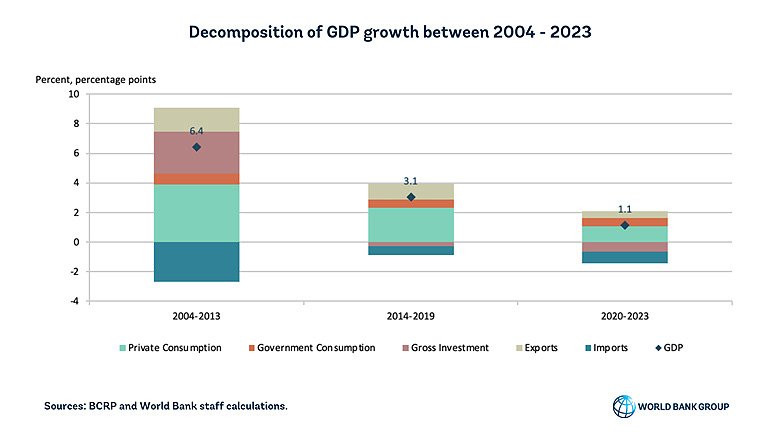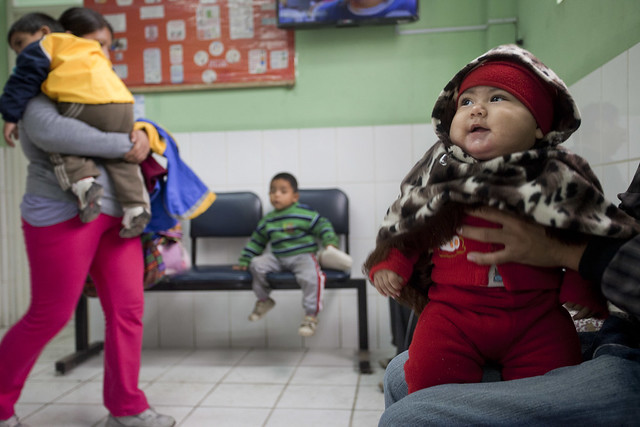Between 2004 and 2013, Peru experienced substantial growth and poverty dropped from 60 to 33 percent. Starting in 2014, declining mining prices and economic deceleration of key trading partners resulted in a growth slowdown with an average of only 3 percent growth from 2014-2019, which was later exacerbated by the impact of COVID.
Macroeconomic stability, trade openness, and a favorable international environment allowed the country to become an upper middle-income economy, with per capita income rising from US$ 2040 in 2002 to US$ 7126 in 2022. Peru's economic strategy, characterized by sound prudent macroeconomic policies, has resulted in low public debt, substantial international reserves, and a central bank that is widely regarded as reliable. Moreover, the Peruvian financial system is robust, with sufficient capital to weather potential liquidity crises.
Despite these achievements, the country faces ongoing challenges and structural weaknesses that could hinder its path to further development and prosperity: the impact of climate change, persistent inequalities, and an economic model heavily reliant on natural resources. Structural issues, such as the limited creation of formal jobs, productivity, limited economic diversification, and slow progress in reducing poverty and inequality, remain significant obstacles.
To achieve a more inclusive and sustainable growth trajectory, Peru must focus on enhancing the quality of public services, strengthening governance, fostering a business-friendly environment, and ensuring political stability. Looking ahead, the Peruvian economy is expected to recover and grow 2.7 percent in 2024, following a slight contraction of 0.6 percent in 2023, which was attributed to unfavorable weather conditions, social unrest, and diminished business confidence. In 2025 GDP is projected to increase at around 2.4 percent, Over the medium term, GDP is expected to grow at an annual rate of 2.4 percent, primarily supported by exports from new mine projects (Quellaveco, Toromocho expansion). Although poverty rates are anticipated to decline marginally to 33.2 percent of households in 2024, they will likely remain above pre-pandemic levels.
Peru’s macroeconomic environment remains stable. Public deficit is expected at 2.4 percent and 2.0 percent for 2024 and 2025, while the debt-to-GDP ratio is projected to remain stable at around 34 percent. Inflation is expected to converge to the 1-3 percent target range in 2024, supported by the easing of output shocks and moderate domestic demand growth. International reserves are equivalent to 26.5 percent of GDP.
To address structural challenges, Peru must focus on reducing the high level of informality in the labor market, where three-quarters of workers are employed in low-productivity jobs, and on improving the quality of basic government services. These efforts are essential for building a more resilient and equitable economy.
Last Updated: Apr 05, 2024




